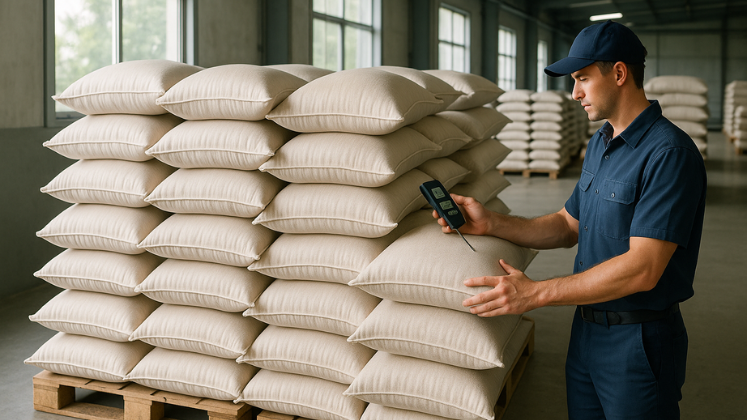For global rice exporters, safeguarding the integrity of each grain from field to freight is critical. From long-grain varieties like Basmati to parboiled options like Sella rice, maintaining freshness and quality isn’t just about appearance; it defines market value and customer satisfaction.
To deliver premium rice to international markets, exporters need to follow smart storage and moisture control practices that protect the product at every stage of the supply chain.
Why Proper Rice Storage Matters
Rice, especially aromatic types that include Basmati rice, is prone to moisture, temperature, and pests. A slight lapse in storage practices can lead to clumping, mold growth, or even loss of the unique aroma Basmati is known for.
For exporters dealing with large-scale volumes, the proper infrastructure and packaging are just as critical as the rice itself.
1. Moisture Management: The First Line of Defense
Moisture is the top enemy in rice preservation. To control it effectively:
- Desiccants (Moisture-absorber) such as silica gel or calcium chloride are commonly placed inside shipping containers to absorb excess humidity.
- Moisture meters are used to regularly check levels before, during, and after storage to avoid unseen spoilage.
- Exporters are increasingly opting for vacuum-sealed or laminated barrier bags, which not only block moisture but also preserve the grain’s fragrance and nutritional quality.
In environments with fluctuating humidity, humidity-controlled warehouses offer an advanced solution. By regulating internal conditions, they prevent condensation, a common cause of mold and fermentation.
2. Packaging that Protects and Performs
Protective packaging goes beyond aesthetics. The ideal packaging:
- It must be airtight to prevent air and moisture exposure.
- Should resist rough handling during transport.
- Needs to block UV rays and odors that could affect rice aroma.
Options like multi-layered kraft paper bags lined with polyethylene or food-grade PET containers offer both strength and flexibility. Many high-performing exporters even customize packaging based on the destination climate.
3. Storage Best Practices for Long-Term Freshness
Once packaged, rice should be stored with the following principles in mind:
- Cool, dry storage rooms below 20°C (68°F) are ideal.
- Avoid proximity to walls or direct floors; instead, store bags on wooden pallets with space for air circulation.
- Use FIFO rotation systems (First In, First Out) to prevent old stock from mixing with fresh batches.
- Employ natural pest deterrents such as neem leaves or airtight fumigation techniques, especially in high-risk regions.
4. Quality Assurance at Every Stage
Quality control isn’t just done at the final product; it’s a continuous assurance throughout the process. From pre-shipment inspections to random batch testing, exporters must evaluate quality assurance through:
- Grain moisture content
- Grain length and breakage ratio
- Aroma retention
- Color consistency
- Contamination levels
When problems arise, timely corrective action that includes repackaging, re-drying, or sorting contaminated batches is done. It prevents full-scale damage at the final point.
At Meskay & Femtee Trading Company, we prioritize these methods across our operations to ensure every consignment meets global expectations. For reliable performance and reliable rice storage systems, MFTC stands out as a leading rice exporter known for its quality assurance and long-term product freshness.
Frequently Asked Questions
1. What is the ideal moisture level for storing rice?
Rice should be stored at moisture levels below 14% to prevent microbial growth and maintain grain integrity.
2. Can improper packaging cause the rice to spoil during export?
Yes, poor packaging may allow moisture and pests to affect the rice, leading to clumping, discoloration, and mold.
3. How do exporters prevent rice from absorbing unwanted odors?
Using odor-resistant packaging and storing rice away from chemicals or other aromatic goods preserves its natural fragrance.
4. What storage method is best for long transit times?
Vacuum-sealed or desiccant-protected containers within temperature-controlled warehouses provide the best protection for extended exports.
5. Why is MFTC considered a leader in rice storage solutions?
MFTC employs advanced storage technology, strict quality control, and optimized packaging, making it a top choice for consistent rice quality in global markets.


Leave a Reply